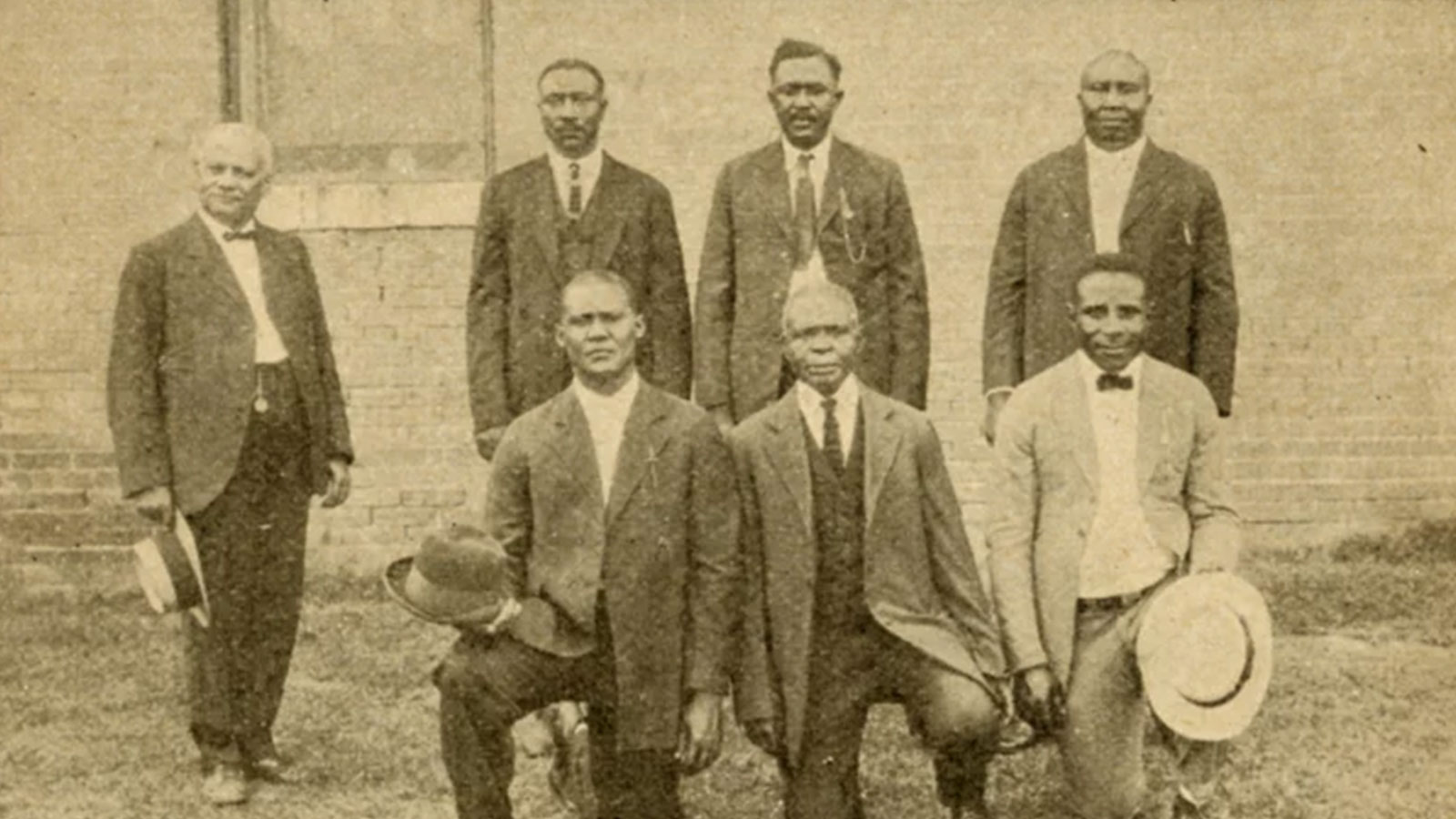Shortly after going to work for the Tulsa Historical Society in 2001, Michelle Place recalls historian Richard Warner hefting a large cardboard box atop her desk. “This is the most important collection that the Tulsa Historical Society has,” he told her. “Guard it with your life.”
Warner had co-authored the final report of the 1921 Tulsa Race Riot Commission, created by the Oklahoma Legislature to present a historical accounting of the infamous massacre that left upward of 300 African Americans dead and resulted in the destruction of “Black Wall Street,” in the city’s prosperous Greenwood enclave. The box contained all of the research the commission had collected.
Place gravitated toward the photographs inside but couldn’t stomach what she saw. “It was so horrific,” she says. “Burned bodies and dead in the streets.”
Just a few weeks earlier, Place had known nothing about the death and destruction depicted in those black and white images. It was only after fielding a call from an overseas journalist wanting to speak with someone about “the Tulsa race riot” that a colleague clued her in. “‘You don’t know, do you?'” she remembers the co-worker asking.
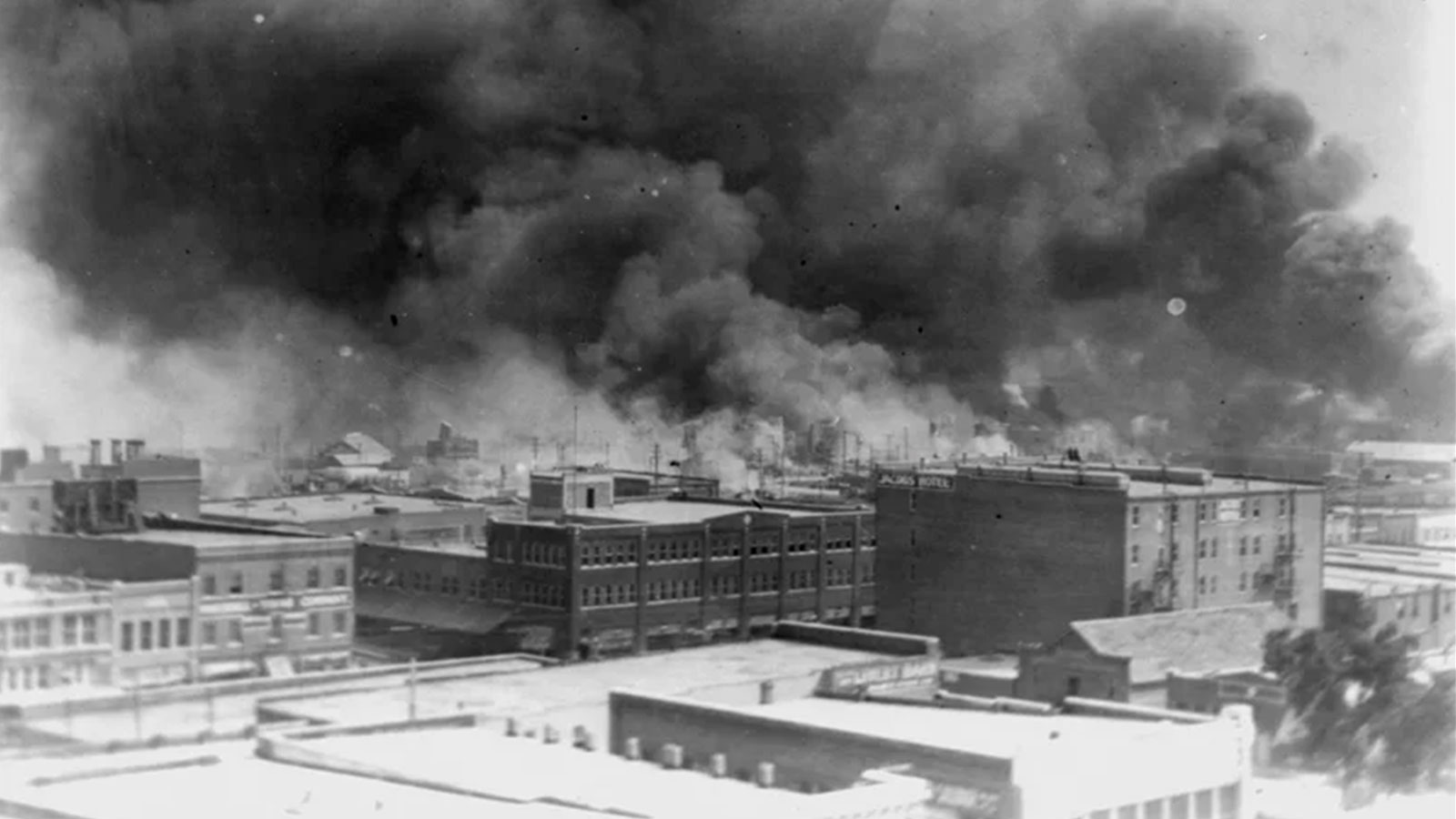
In this 1921 image provided by the Library of Congress, smoke billows over Tulsa, Okla., following the killing of hundreds of people in “Black Wall Street” in the city’s prosperous Greenwood enclave.
(Alvin C. Krupnick Co./Library of Congress/AP)
Place, now the historical society’s executive director, moved to Tulsa in 1987 but grew up in Little Rock, a little more than 100 miles northwest of Elaine, a tiny Arkansas Delta town with a similarly troubled past.
The two Southern cities, however, could hardly be more different in the way they have dealt with their history. The Tulsa commission, after researching the events of May 31-June 1, 1921, offered recommendations that have served as a blueprint for how to move toward acknowledgment, healing and even restitution. Although some of its recommendations remain controversial and unresolved, such as payments to survivors and descendants, others — including scholarships for descendants of those who lost businesses and property in the massacre — have moved forward, albeit haltingly.
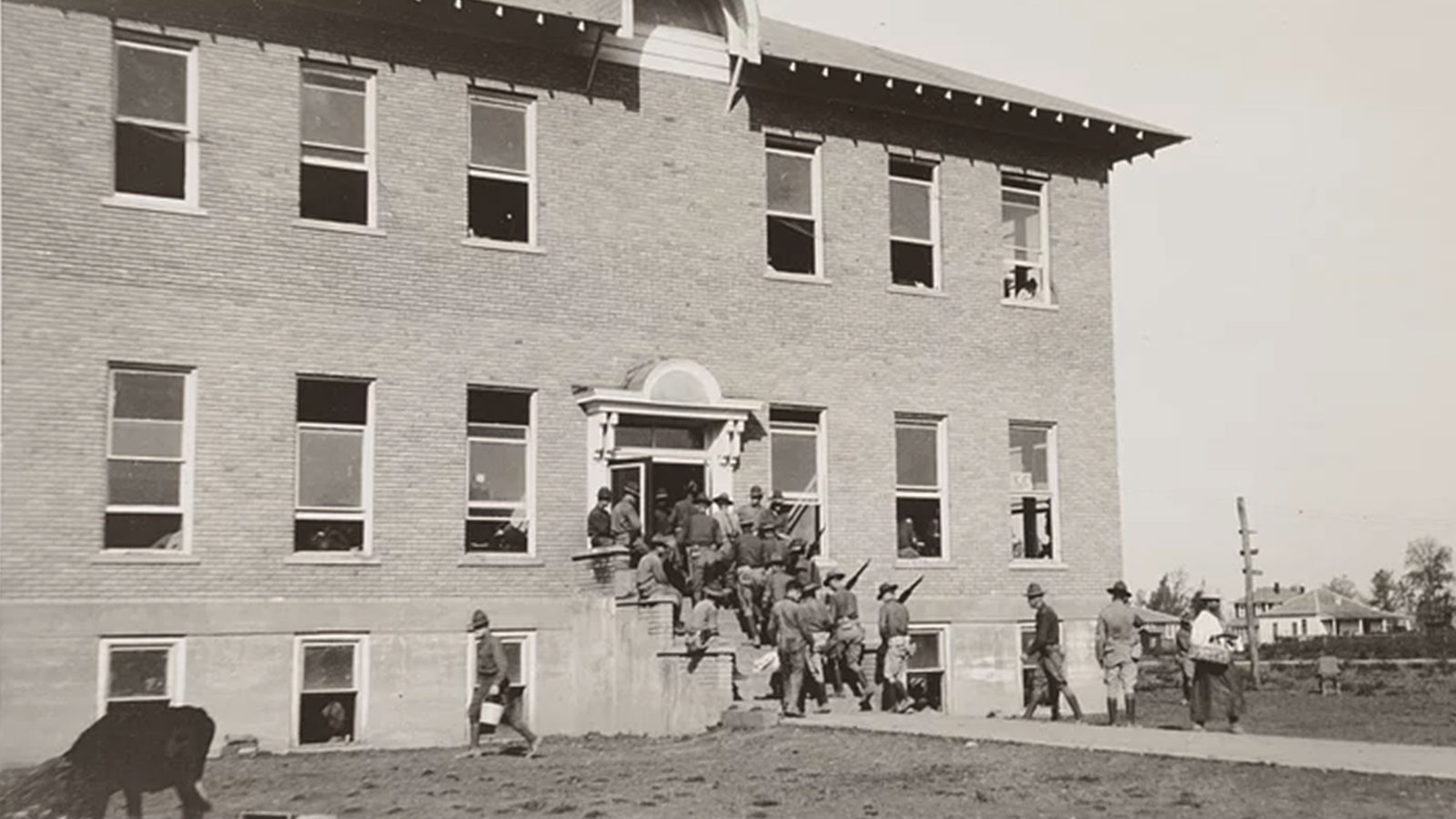
Soldiers of the 57th Infantry of the 3rd Division from Camp Pike in Little Rock carry rifles as they enter a guardhouse and hospital after being dispatched to Elaine in 1919. (Library of Congress)
In Elaine, the reckoning has come much more slowly. Most historical accounts of the massacre there, including contemporaneous reporting by the prominent African American journalist Ida B. Wells, relate that Black sharecroppers were meeting at a church in a place called Hoop Spur on the town’s outskirts. The farmers were organizing for a larger portion of the profits from their cotton.
Late on the night of Sept. 30, 1919, a group of local white men surrounded the church. Although it isn’t clear who fired first, a shot from within the church claimed the first victim — a white man.
The following day, a rampage ensued, with whites targeting Black farmers and their families. The governor dispatched soldiers to put down the violence, which was characterized by white landowners as an “insurrection.”
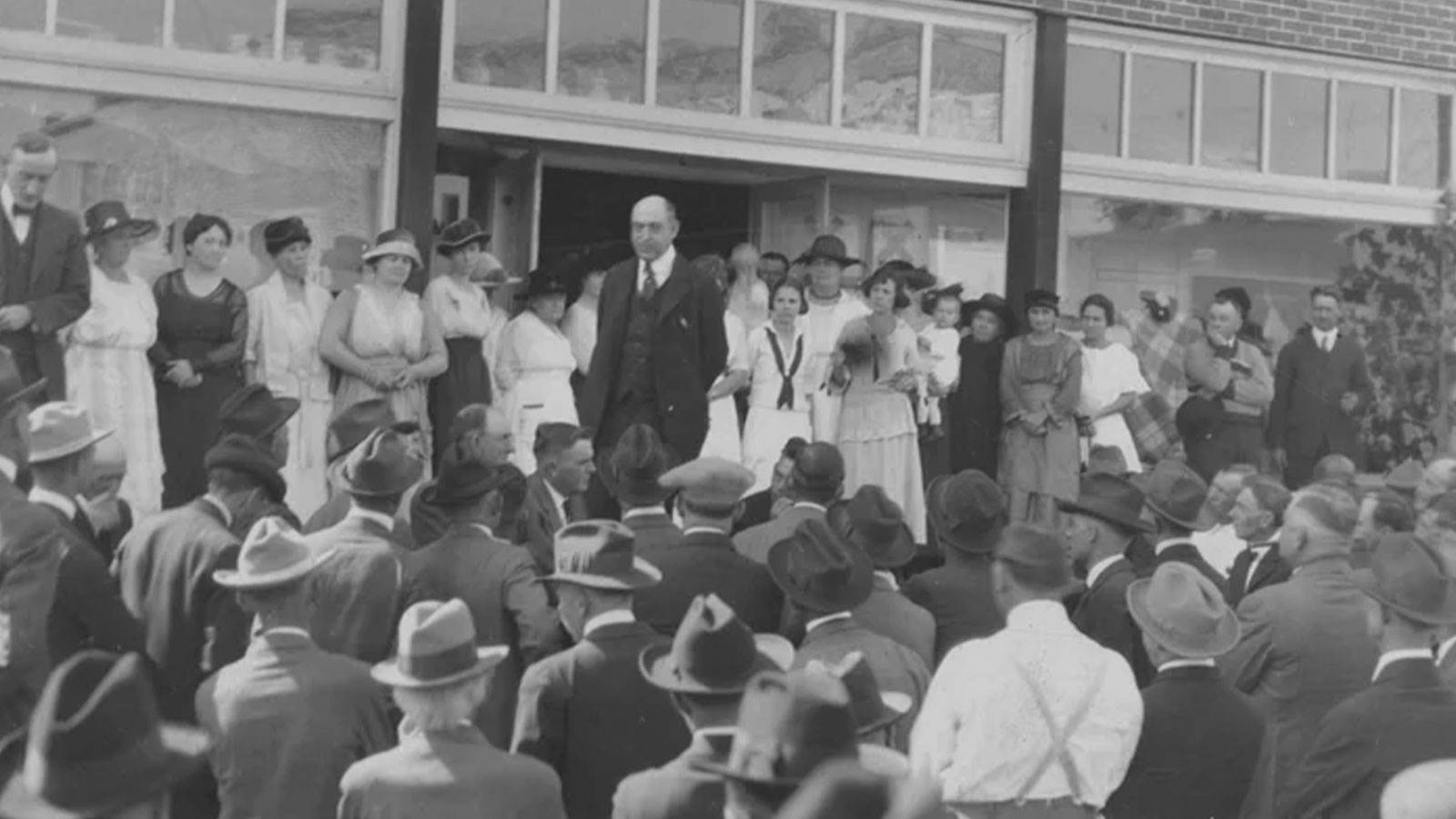
Arkansas Gov. Charles Brough addresses a crowd in front of Elaine Mercantile in Elaine, Ark., after the Elaine massacre, circa 1919.
(Butler Center for Arkansas Studies, Central Arkansas Library System)
The number of those killed in Elaine is disputed, but the generally accepted range is between 100 and 240 Black people and five white people. Figures from some sources range much higher.
Along with Tulsa, it is regarded as one of the worst incidents of racial violence in American history. But while the Tulsa massacre has become well known in recent years, the events of 1919 in Arkansas have received little attention.
To be sure, Tulsa is a growing city of more than 400,000 people. Elaine’s population has been falling since the 1970s and it is struggling to hold on to its 500 or so residents. Like other cities haunted by long-ignored racial violence, Elaine, unlike Tulsa, is still far off a path to reconciliation or to resolving thorny questions of how to properly atone for the sins of the past and do right by the descendants of victims.
At a time of renewed national focus on racial justice, experts say these conversations are more important than ever.
The rocky path to reconciliation
The first step is acknowledgment, and simply admitting that horrible events took place moves in the right direction, says Marcus Anthony Hunter, a sociology professor at the University of California, Los Angeles.
“What happens a lot in terms of the history of violence against Black communities is that people treat it like it’s false,” Hunter says. “It creates a condition where Black people are led to believe that they’re making up stuff.”
But getting to acknowledgment, let alone reconciliation, is not an easy task. It is frequently time-consuming, painful and divisive. Tulsa is considered a model by some for how to do it.
In addition to the commission and scholarships, Oklahoma has mandated that its schools teach the massacre. The Tulsa Historical Society’s Place is proudest that thousands of documents, photos and other resources about the massacre have been made available online. Not only does it preserve and protect the artifacts, but anyone wanting to do research can access them, she says.
Still, she admits it took years before the Tulsa commission’s recommendations were acted on. “By 2012, certainly there were Tulsans, both Black and white, who recognized that the 100th anniversary [was] quickly approaching,” she says. “Many of us felt that the first thing that we had to do was to educate our community about what had happened and [about] this injustice,” she says.
Even so, a lawsuit against Tulsa by survivors of the massacre — all more than 100 years old now — is ongoing. Among other things, it seeks financial restitution and the redistribution of land to the families of Greenwood’s original landowners, a move that the commission called for more than 20 years ago.
Elaine remains split over what happened
Elaine’s efforts to deal with its past have been complicated by a historical narrative that remains unsettled — with the town at odds over how the massacre started and who was involved. The one thing that both sides agree on is that a decades-long conspiracy of silence reinforced by fear kept perpetrators and survivors from talking.
Poet, essayist and translator J. Chester Johnson says to some, the destruction of Tulsa’s “Black Wall Street” is just a more compelling narrative than Elaine’s “dirt poor sharecroppers along the Mississippi River Delta.”
“There are TV programs on Tulsa. There have been movies,” he says. “There’s a difference in terms of attention. And I hate that.”
Johnson, 78, grew up in southeast Arkansas but now lives in New York. His grandfather, who was a Ku Klux Klan member, participated in the 1919 massacre, and the family’s disquieting ties to the events prompted him to write Damaged Heritage: The Elaine Race Massacre and A Story of Reconciliation, published in 2020.
As he was researching the book, he says, some acquaintances wondered aloud why he wanted to write it. A close friend summed it up, telling him “the more you scratch an event like Elaine, the more the scab of racism bleeds.”
The older generation in town always knew what happened, but few were willing to relinquish the secret, says James White, a descendant of one of the massacre victims.
“White people knew. Black people knew about it, too,” says White, director of the Elaine Legacy Center, which has collected oral histories related to the events of 1919.
But the generation that went through those events wasn’t always eager to pass that knowledge along. Lisa Hicks-Gilbert, 54, grew up in Elaine and was unaware of the massacre until around 2008, when she encountered one of the few books on the subject, Blood in their Eyes, by Grif Stockley.
“Over the years, I started talking with my grandmother and I asked her first and she confirmed that it indeed had happened,” she says.
Hicks-Gilbert later discovered that she is related to brothers Frank and Ed Hicks, two of a dozen Black men known as the “Elaine Twelve,” who were swiftly convictedof murderby all-white juries and sentenced to death in connection with the massacre. Ultimately, the U.S. Supreme Court, in the landmark 1923 case Moore v. Dempsey, overturned what the justices said were verdicts tainted by “mob domination” that deprived the men of due process.
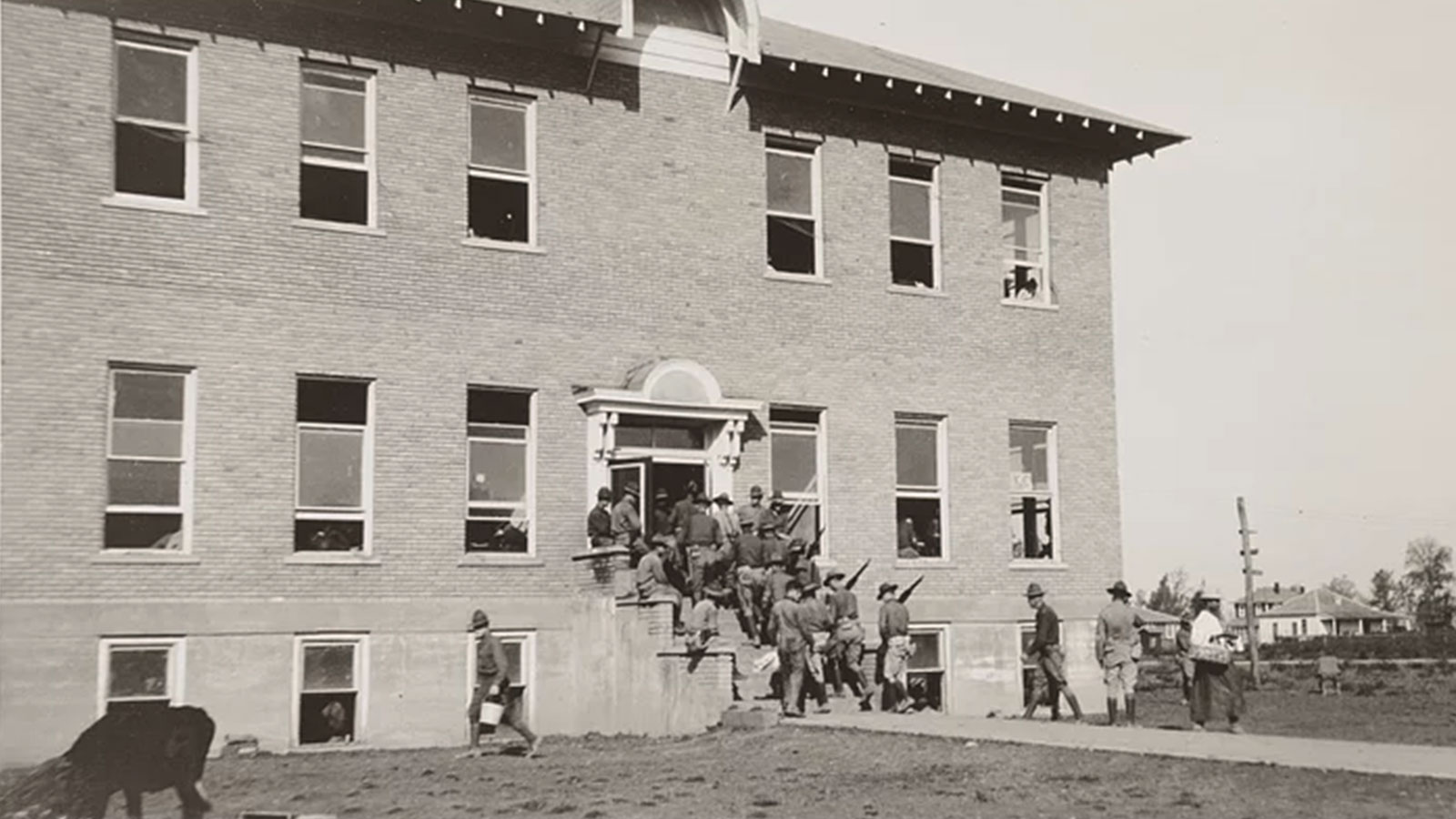
The 12 Elaine defendants in Helena, Ark., circa 1919. (Butler Center for Arkansas Studies, Central Arkansas Library System)
In all, 122 African American men were convicted and jailed in connection with the violence. No whites ever faced justice.
Despite their shared legacy, White and Hicks-Gilbert represent competing camps among descendants.
Hicks-Gilbert believes the generally accepted view that the massacre involved Black sharecroppers trying to organize, but White thinks his own family’s story, along with the oral histories the Elaine Legacy Center has helped collect, support a different version of events — mainly that most of the Black farmers were landowners themselves, not just sharecroppers. The disagreement cuts to the heart of reparations, the most controversial issue for both Elaine and Tulsa.
The disagreement among descendants in Elaine helped tank a dialogue with Gov. Asa Hutchinson’s office about how to mark the 2019 centenary, according to Kwami Abdul-Bey, a legal advocate who is drafting legislation for Arkansas that draws on Oklahoma’s approach to the Tulsa massacre.
“No bodies have been found”
In early 2019, as the centenary of the Elaine massacre approached, Abdul-Bey led a group that arranged a sit-down with Hutchinson. They wanted to discuss legislation to clear a path for posthumous exonerations for the Elaine Twelve and scores of other Black men arrested and jailed on lesser charges connected to the massacre. Among other things, the bill would also have set up a Tulsa-style commission and mandated a K-12 curriculum on the history of the massacre.
That first meeting showed promise, Abdul-Bey says, but a subsequent one fell apart when the question of restitution came up. Some of those who attended the second meeting dispute that characterization of events.
After that, he says, emails to Hutchinson’s office on the subject went unanswered. “We’ve communicated with the governor’s office on other topics, but they will not discuss anything dealing with Elaine.”
The proposed legislation died in committee last year.
On the 100th anniversary, a memorial was dedicated in Helena, a town of 10,000 people located 30 minutes north of Elaine. Organizers thought the larger town would attract more visitors. The site of the memorial, too, proved a point of contention, with White and others adamant that it should have been located in Elaine.
The governor was out of the country for the dedication ceremony and his office did not send a representative, locals say. Hutchinson’s office did not respond to NPR’s multiple emails for comment.
Abdul-Bey is now busy honing a narrower version of the bill, focused solely on exonerations, in the hope that Gov.-elect Sarah Huckabee Sanders will turn the page and reengage on Elaine.
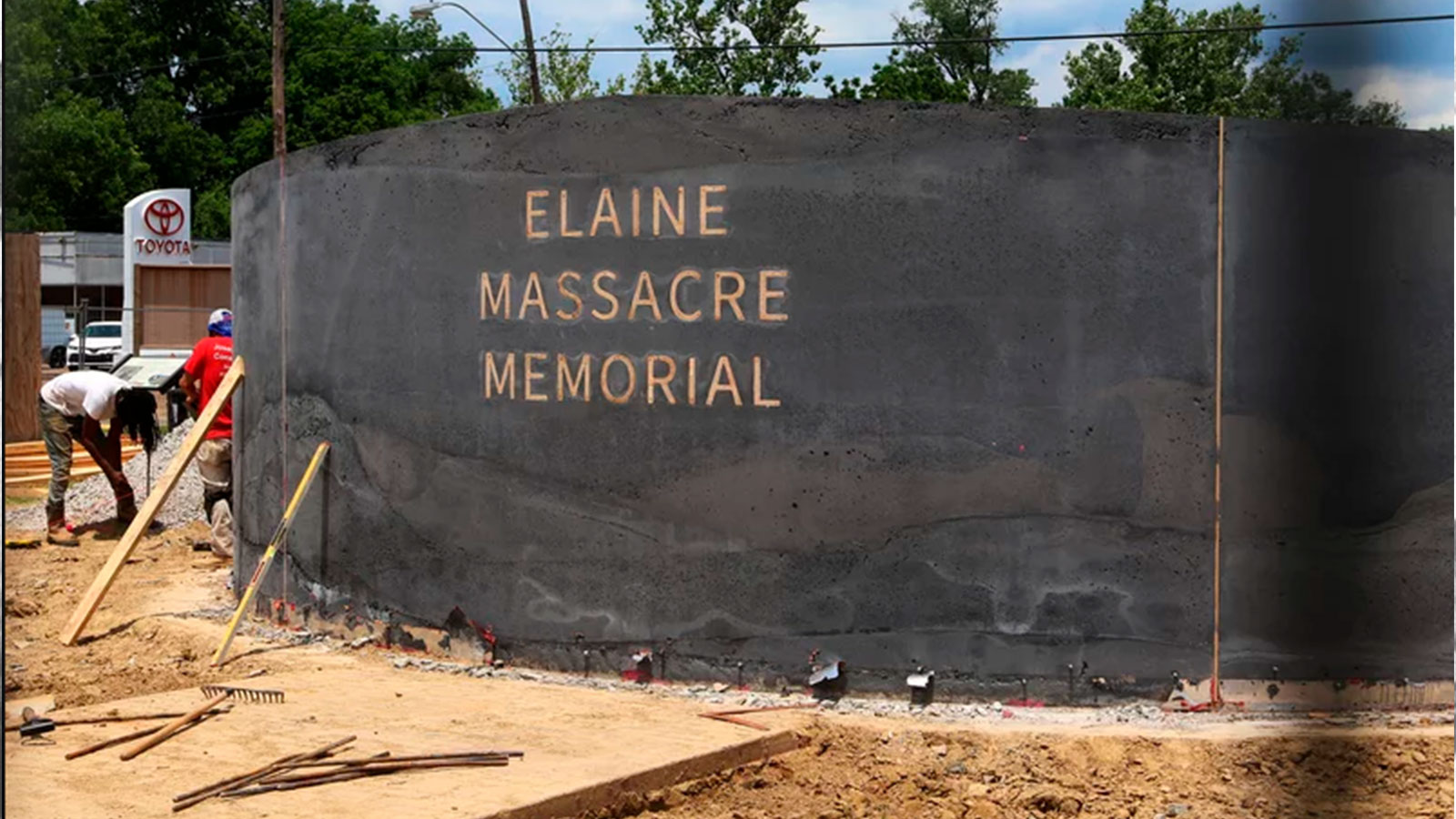
A construction crew works on the monument honoring victims of the Elaine massacre in Helena, Ark., on June 15, 2019. (Noreen Nasir/AP)
Aside from the memorial in nearby Helena, there are a few other signs of progress in Elaine, where a museum dedicated to the massacre is scheduled to open soon. Meanwhile, Hicks-Gilbert this past week won a runoff to become the next mayor of Elaine — she will be the first African American and the first female in the town’s history to hold the top job.
But other issues remain a sticking point. Tulsa has pursued identification of victims, exhuming bodies for DNA testing with the aim of determining whether they are linked to the massacre. In Elaine, only the bodies of the five white people who died in the massacre were ever recovered. The hundreds of African Americans who were killed are thought to have been buried in mass graves or simply dumped in swamps, or in the river. None have ever been recovered.
“Where this happened was very close to the Mississippi River and its tributaries,” says Johnson, the poet and essayist.
“There was no effort to try to bring these bodies together,” he says, suggesting that those remains may never be found.
White, the descendant of one of the Black victims, is more blunt.
“No bodies have been found,” he says. “But guess what? Ain’t nobody here looking for no bodies, either.”
Source: NPR
Featured image: A dozen Black men were convicted of murder by all-white juries in connection with the 1919 massacre in Elaine, Ark. Above, defendants S.A. Jones, Ed Hicks, Frank Hicks, Frank Moore, J.C. Knox, Ed Coleman and Paul Hall with their attorney at the state penitentiary in Little Rock in 1925 after the Supreme Court overturned their convictions. (Butler Center for Arkansas Studies, Central Arkansas Library System)


